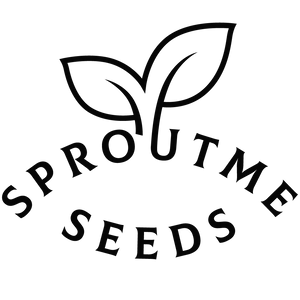Tomato Roma VF
Tomato Roma VF is a popular plum tomato variety known for its firm flesh, low moisture content, and excellent taste, making it perfect for sauces, canning, and cooking. Growing Roma VF tomatoes at home can be a rewarding experience, providing you with fresh, flavorful tomatoes for your culinary creations. This comprehensive guide will take you through the steps to successfully cultivate Tomato Roma VF in your garden or containers.
1. Preparing for Growing
Selecting a Planting Location:
Choose a sunny spot in your garden that receives at least 6-8 hours of sunlight daily. Tomatoes thrive in full sun, which is essential for vigorous growth and fruit production.
Soil Preparation:
Incorporate organic matter such as compost or aged manure into the soil to improve fertility and drainage. Roma VF tomatoes prefer well-draining soil with a pH of 6.2-6.8. Test your soil and amend it as needed to maintain the ideal pH level.
Purchasing or Preparing Containers/Pots:
If growing in containers, choose pots with drainage holes to prevent waterlogging. Ensure the containers are large enough to accommodate the tomato plants, with a minimum size of 5 gallons.
2. Starting from Seeds Indoors
Seed Preparation:
Tomato seeds do not require any special treatment before planting, making them easy to start.
Choosing Suitable Pots/Containers:
Use seedling trays or small pots filled with a well-draining seed-starting mix. Ensure the containers have adequate drainage.
Sowing and Caring for Seeds Indoors:
Sow Tomato Roma VF seeds indoors 6-8 weeks before the last frost date. Maintain consistent soil moisture and a temperature of 70-75°F (21-24°C) for optimal germination. Place the containers in a warm, bright location or under grow lights.
Transplanting to Larger Containers if Necessary:
Once seedlings develop several sets of true leaves, transplant them into larger containers or individual pots to provide ample space for root growth.
3. Starting from Seeds Outdoors
Soil Preparation:
For outdoor planting, prepare the soil by removing weeds and loosening it to a depth of 12 inches. Incorporate organic matter to improve soil structure and fertility.
Selecting Appropriate Timing and Method for Outdoor Sowing:
Directly sow Tomato Roma VF seeds outdoors after the danger of frost has passed and the soil temperature has warmed to at least 60°F (16°C).
Caring for Seeds Outdoors:
Keep the soil consistently moist until seeds germinate, typically within 7-14 days. Thin seedlings to about 18-24 inches apart to allow room for growth.
4. Growing in Containers/Pots
Selecting Suitable Plants for Containers:
Roma VF tomatoes are well-suited for container gardening, making them ideal for patios, balconies, or small gardens.
Container and Soil Preparation:
Use containers with drainage holes. Fill with a well-draining potting mix enriched with compost.
Sowing or Transplanting Plants into Containers:
Sow seeds or transplant seedlings into containers, ensuring each plant has enough room to grow. Place the containers in a sunny location.
Caring for Container Plants:
Water regularly to keep the soil evenly moist but not waterlogged. Feed plants with a balanced fertilizer every 4-6 weeks during the growing season. Support the plants with stakes or cages to keep them upright.
5. Transplanting to Garden
Soil and Planting Site Preparation:
Prepare the garden bed by incorporating compost and ensuring good drainage. Plant Tomato Roma VF seedlings 18-24 inches apart in rows spaced 36-48 inches apart.
Correct Timing and Method for Transplanting:
Transplant seedlings outdoors after the danger of frost has passed and the soil has warmed. Water transplants thoroughly after planting to reduce transplant shock.
Post-Transplant Care:
Mulch around plants to conserve moisture and suppress weeds. Provide support for tomato plants with stakes or cages to prevent them from sprawling on the ground.
6. Plant Care
Watering:
Keep the soil consistently moist, especially during dry periods. Water at the base of plants to avoid wetting foliage, which can lead to disease.
Fertilizing:
Apply a balanced fertilizer or compost tea every 4-6 weeks during the growing season to provide essential nutrients.
Weeding:
Keep the garden bed or container free from weeds to reduce competition for water and nutrients.
Pest and Disease Management:
Monitor plants regularly for signs of pests or diseases. Treat fungal diseases with appropriate fungicides and use organic insecticidal soap for pests. Remove affected leaves and practice crop rotation to minimize disease risk.
7. Harvesting
Determining When Plants Are Ready for Harvest:
Tomato Roma VF is ready for harvest when the fruits are fully colored and firm to the touch. Typically, this is about 75-85 days from transplanting.
Harvesting and Storage Guidelines:
Use pruning shears or scissors to cut tomatoes from the plant, leaving a short stem attached. Store harvested tomatoes at room temperature away from direct sunlight. For longer storage, consider canning or making sauces.
8. When to Start from Seeds by USDA Plant Hardiness Zones
Timing for Starting Seeds:
Start Tomato Roma VF seeds indoors 6-8 weeks before the last frost date. Sow seeds directly outdoors after the danger of frost has passed and soil temperature is at least 60°F (16°C).
9. Fast Facts
- Planting Depth: Plant seeds ¼ inch deep.
- Seed Spacing: Sow seeds ½ inch apart and thin to 18-24 inches apart.
- Plant Spacing: Space plants 18-24 inches apart in rows spaced 36-48 inches apart.
- Number of Seeds per Pot/Container: Plant one seed per pot/container.
- Water Preferences: Keep soil consistently moist; avoid overwatering.
- Sun Preferences: Requires full sun for optimal growth.
- Soil Type: Well-draining, rich in organic matter; pH 6.2-6.8.
- Companion Planting: Plant with basil, marigolds, or carrots to enhance growth and deter pests.
- Temperature Preference: Thrives in warm temperatures; prefers daytime temperatures between 70-85°F (21-29°C).
- Days to Germination: 7-14 days.
- Days to Harvest: Approximately 75-85 days from transplanting.







